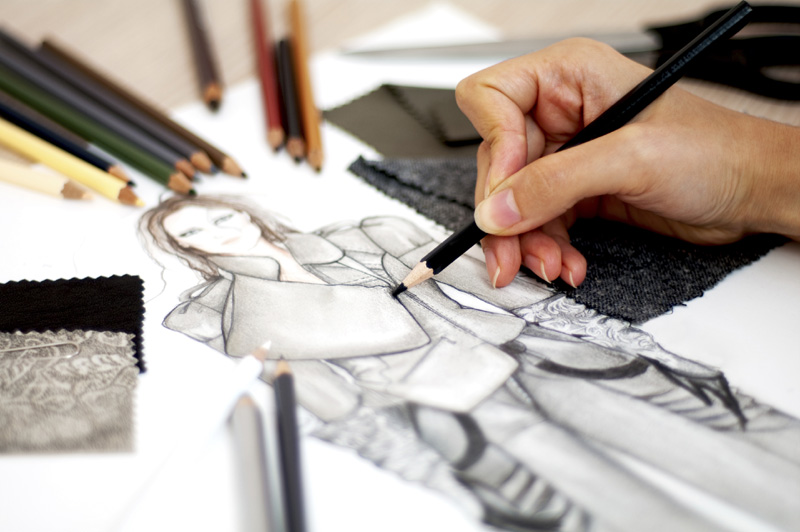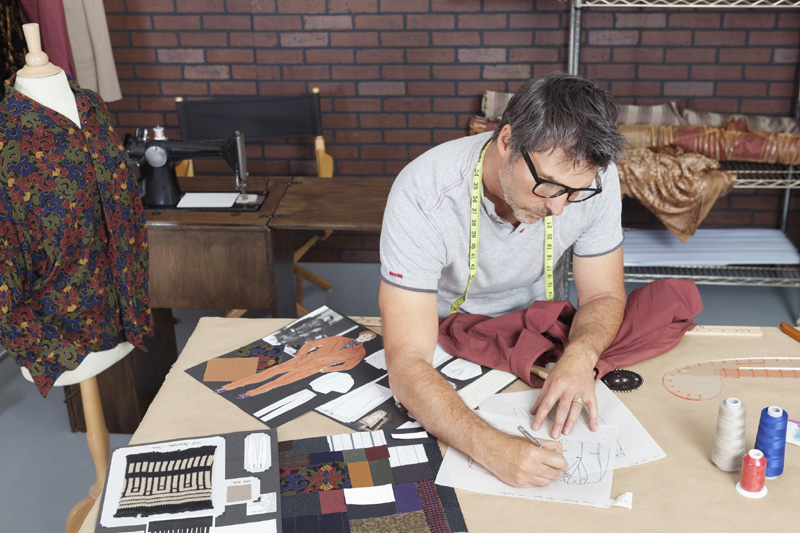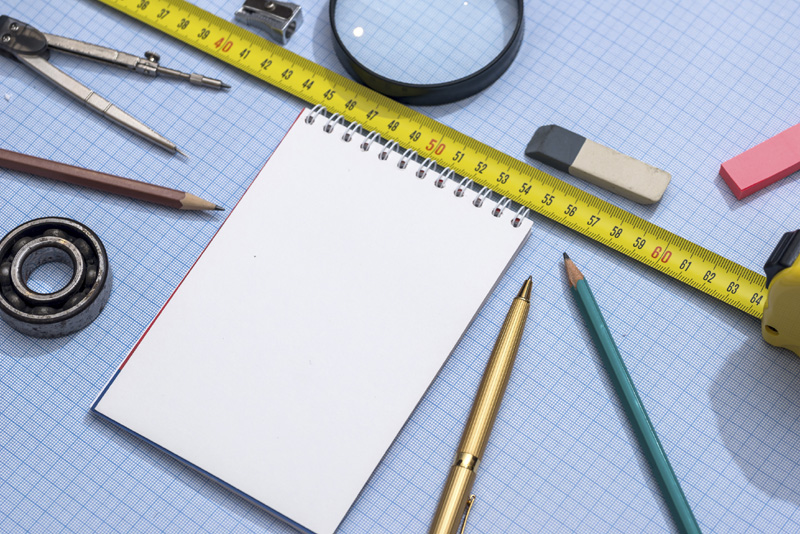Fashion Bachelor Degree Colleges Online and On Campus

Understanding the fashion design industry involves taking into consideration several industries that overlap with the fashion industry, and how these interactions take place. There is a great deal involved in a fashion design career, from things you should know to techniques you should practice, as well as the various tasks you will take on within several jobs you pursue. A fashion designer has several basic skills and should be able to utilize today’s latest technologies in order to create fashion, market fashion, produce fashion, and sell fashion. All these tasks are just the basics and can expand into several different industries from marketing to television, film, and even retail.
Desired Education
Believe it or not, there is an education required to take on several positions within the fashion industry. Many employers are willing to accept experience, but will desire some type of degree. Even without experience, a bachelor’s degree is more favorable with employers than having experience and no degree. Fashion bachelor degree colleges are located throughout the U.S. and Canada as well as abroad to offer the education you need to enter the industry with full potential. You can utilize these schools to earn the education needed to get a top position within the field.
Getting a Bachelors in Fashion
When you begin your bachelor’s degree fashion design program, you will begin by learning the fundamentals of the industry, including the start of all projects with pen and paper. You will learn several other aspects of the profession including:
- Material blending
- Colors and patterns
- Development of fashion design projects
- Manufacturing
- Marketing
You will also learn the various techniques that are used within the various types of fashion, with several different specialties as well. Whether you are seeking to create beautiful evening gowns, couture, or ready-to-wear garments, there is a great deal to gain from a fashion design bachelors degree.
Where to Attend School
Even if you live in a state without a great deal of focus on the fashion industry, there are schools available both online and on campus to provide you with the bachelor’s degree you pursue. You can utilize online programs from several top colleges that are found in the more prestigious states within the industry, or even from online only schools that are offering the computer based instruction that is becoming a prime educational source in today’s world. You want to understand the hardware and software components of the position, which is now even more possible with these online classes.
If you aren’t sure whether a bachelor’s degree would help or not, you have to look at the facts. Employers want employees that are well skilled and educated, even if there is experience involved. Even the most well-known fashion designers obtained an education in order to get to the top tier of the industry, as there are several elements that go much further than putting together a style with clothes. You will need the technical skills as well, as art is easily acquired through talent, but the technical aspect of the profession must be learned in a school.
Using Online Fashion Schools to Go Far in the Fashion Industry
Online fashion schools can really offer a wealth of opportunity towards a bright future in a high demand industry that can top $100,000’s in earnings, and more with the appropriate experience and drive. Although the fashion industry is a very challenging industry, the right education could equip you with the skills you need to make it to the top with the right attitude and mind frame. Getting your fashion design degree is very beneficial to you if you wish to go further than a local retail position, or even if you simply want more responsibility within the retail industry in fashion management and other related fields.
Types of Programs Offered
There are several online fashion design schools that offer several different programs in fashion design to assist you in getting to the level appropriate to join the industry in the sector you most desire. This could be runways or large clothing operations, or even the design of visual fashion marketing and more. Various programs offered include:
- Fashion management
- Fashion design
- Merchandising management
- Visual fashion development
There are several new programs always emerging, with the possibility to earn various degrees such as:
- Fashion Associates of Art
- Bachelor of Fine Arts
- Master of Fine Arts
There are several courses involved in the various programs offered which will cover a variety of aspects of the industry including:
- Fashion design
- Merchandising and marketing
- Knitwear design
- Visual merchandising
- Active sportswear design
There are several different sectors of the industry in which you may enter, including specialty fashion design for various industries including:
- Business/Uniform Design
- Costume Design
- Military Design
There are various trends that you will learn, as well as the understanding of fashion and following the various factors that affect trends, including seasons and age groups. Earning your fashion merchandising degree online will provide you with the ability to produce fashion lines, expanding upon the skills required to create fashion lines.
Choosing the Right Fashion Design School Online
If you are ready to get your fashion design degree online, there are several internet based schools from which you can choose. These schools will offer a variety of online fashion design programs, ensuring that you are able to follow the field you are most interested in. As you begin your courses online, you will find that the experience is extremely beneficial, replacing the hands-on instruction with detailed computer based instruction with several resources utilized to provide the highest quality education possible.
Online fashion design programs are necessary if you wish to go to the highest levels of the fashion design industry. There is a great deal of competition within the industry, with several employers seeking fashion designers to establish the latest trends, including Macy’s, Target, and Three Dots. You can even make your place in the magazines as a fashion journalist if you so wish, as there are several careers you can pursue with a fashion design degree from an accredited college or university.
Pursuing a Fashion Design Online Masters Degree
When you are considering an online education in fashion design, you will be presented with several degree options including certificate, associate of arts, bachelor’s, and at the highest scale the fashion design online masters degree. There is a large difference between the various degrees, with the master’s degree serving as the highest credentials possible within the field. Typically, the decision to pursue a master’s degree comes after the completion of undergraduate studies, when you have decided that you are ready to take your skills to the highest level possible in order to access the highest positions available in the industry.
Types of Fashion Online Masters Degree Programs
Just as you would find several bachelors degree programs, you will find several different masters degree programs to choose from, offering a different niche within the industry. Such programs include:
- Fashion and apparel design
- Fashion and merchandise management
- Retail management and development
- Fashion marketing management
Each of these programs will delve into a different section of the fashion industry, allowing you to make the choices of where you want to work and in which exact industry, whether film, television, fashion media, journalism, or any other industry fashion design integrates within.
Elements of Masters Program
A master’s degree in fashion design consists of several elements, with skill building instruction in many different subjects including:
- Apparel design
- Flat pattern design
- Men, women, and children’s clothing design
- Accessory design
- Concept planning
- Fashion marketing and development
You will take on several courses over a 24 month period, after which you will graduate with the highest degree in the field, offering the highest level of employment opportunities and wages that can range between the $70,000’s to the $100,000’s. Each course will expand on previous learning, offering a strong foundation by which to build a strong career.
Possible Careers with Master’s Degree
There are several different careers you can take on with a master’s degree in fashion design. You will be learning the skills to take on the more advanced and upper level positions such as:
- Fashion journalist/magazine publisher
- Trend forecaster
- Fashion director
- Costume creator
There are many other careers that can be taken on, many of which can be within very high profile companies including:
- Macy’s
- Abercrombie & Fitch
- Banana Republic
- Ralph Lauren
There are several different clothing lines that are always recruiting new ideas, as well as many different freelance opportunities available for you to explore.
If you are interested in entering the fashion design industry, there are many different ways you can begin a new profession, however an education can develop the skills and instill the knowledge that you will need to build a long-term career you can enjoy and take pride of. Even if you are already in the industry and have realized the need for a further education in order to advance your opportunities, a distance education fashion master’s degree can definitely bring you to a further level.









